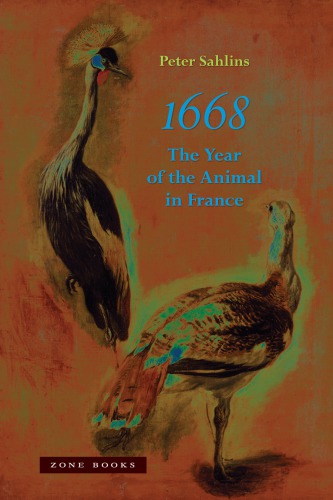Product desciption
The Year Of The Animal In France Peter Sahlins by Peter Sahlins 9781935408994, 1935408992 instant download after payment.
When animals and their symbolic representations—in the Royal Menagerie, in art, in medicine, in philosophy—helped transform the French state and culture.
Peter Sahlins's brilliant new book reveals the remarkable and understudied “animal moment” in and around 1668 in which authors (including La Fontaine, whose Fables appeared in that year), anatomists, painters, sculptors, and especially the young Louis XIV turned their attention to nonhuman beings. At the center of the Year of the Animal was the Royal Menagerie in the gardens of Versailles, dominated by exotic and graceful birds. In the unfolding of his original and sophisticated argument, Sahlins shows how the animal bodies of the menagerie and others were critical to a dramatic rethinking of governance, nature, and the human.
The animals of 1668 helped to shift an entire worldview in France—what Sahlins calls Renaissance humanimalism toward more modern expressions of classical naturalism and mechanism. In the wake of 1668 came the debasement of animals and the strengthening of human animality, including in Descartes's animal-machine, highly contested during the Year of the Animal. At the same time, Louis XIV and his intellectual servants used the animals of Versailles to develop and then to transform the symbolic language of French absolutism. Louis XIV came to adopt a model of sovereignty after 1668 in which his absolute authority is represented in manifold ways with the bodies of animals and justified by the bestial nature of his human subjects.
1668 explores and reproduces the king's animal collections—in printed text, weaving, poetry, and engraving, all seen from a unique interdisciplinary perspective. Sahlins brings the animals of 1668 together and to life as he observes them critically in their native habitats—within the animal palace itself by Louis Le Vau, the paintings and tapestries of Charles Le Brun, the garden installations of André Le Nôtre, the literary work of Charles Perrault and the natural history of his brother Claude, the poetry of Madeleine de Scudéry, the philosophy of René Descartes, the engravings of Sébastien Leclerc, the transfusion experiments of Jean Denis, and others. The author joins the nonhuman and human agents of 1668—panthers and painters, swans and scientists, weasels and weavers—in a learned and sophisticated treatment that will engage scholars and students of early modern France and Europe and readers broadly interested in the subject of animals in human history.


